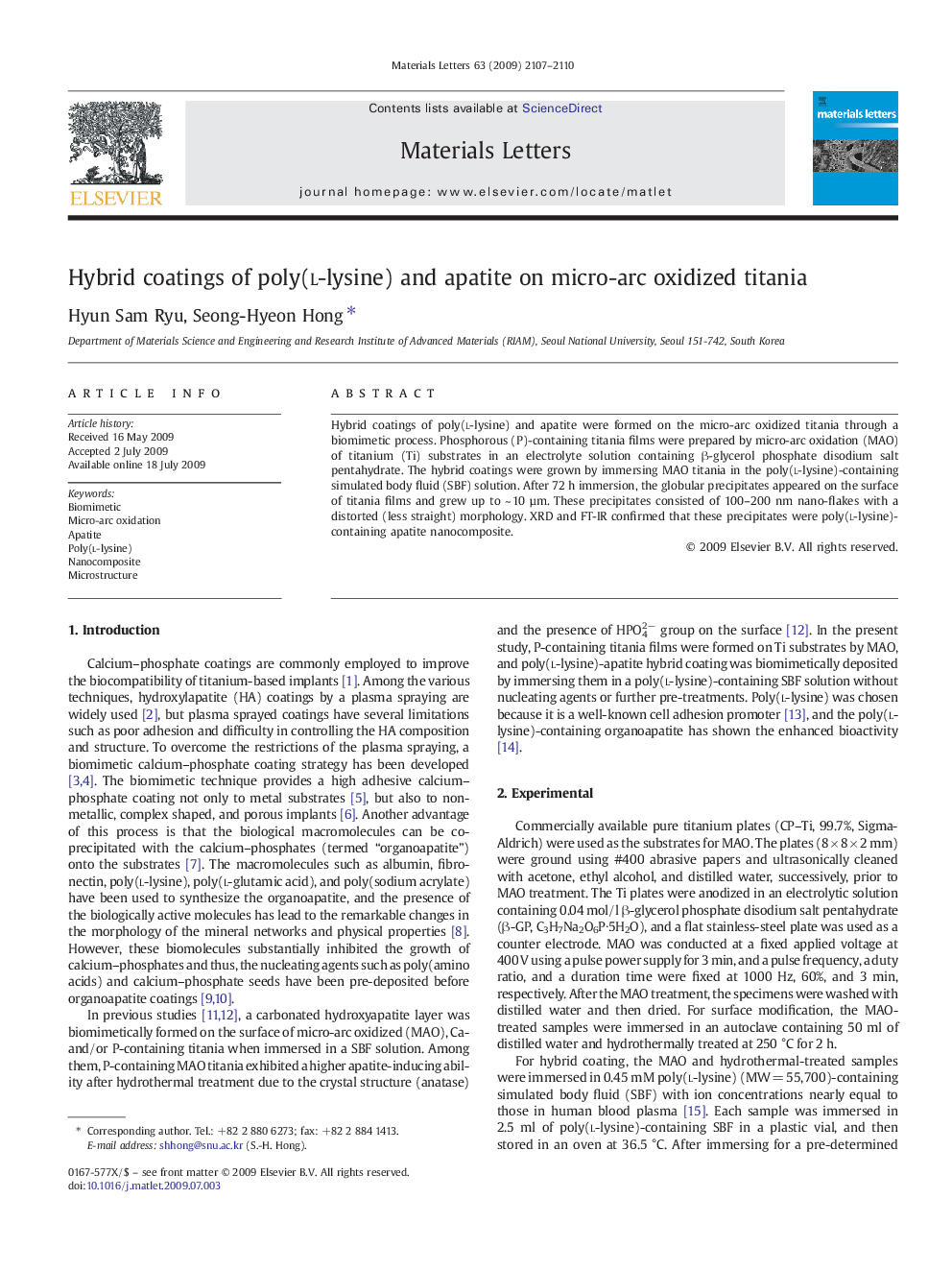| Article ID | Journal | Published Year | Pages | File Type |
|---|---|---|---|---|
| 1650366 | Materials Letters | 2009 | 4 Pages |
Hybrid coatings of poly(L-lysine) and apatite were formed on the micro-arc oxidized titania through a biomimetic process. Phosphorous (P)-containing titania films were prepared by micro-arc oxidation (MAO) of titanium (Ti) substrates in an electrolyte solution containing β-glycerol phosphate disodium salt pentahydrate. The hybrid coatings were grown by immersing MAO titania in the poly(L-lysine)-containing simulated body fluid (SBF) solution. After 72 h immersion, the globular precipitates appeared on the surface of titania films and grew up to ~ 10 µm. These precipitates consisted of 100–200 nm nano-flakes with a distorted (less straight) morphology. XRD and FT-IR confirmed that these precipitates were poly(L-lysine)-containing apatite nanocomposite.
